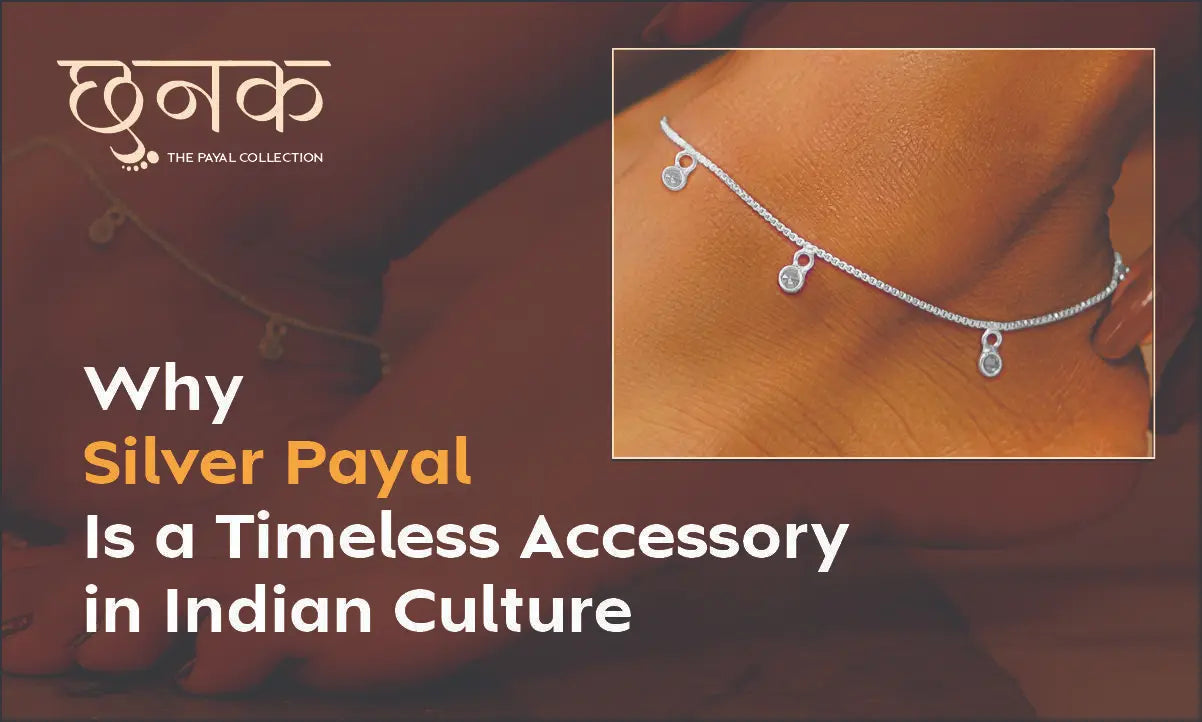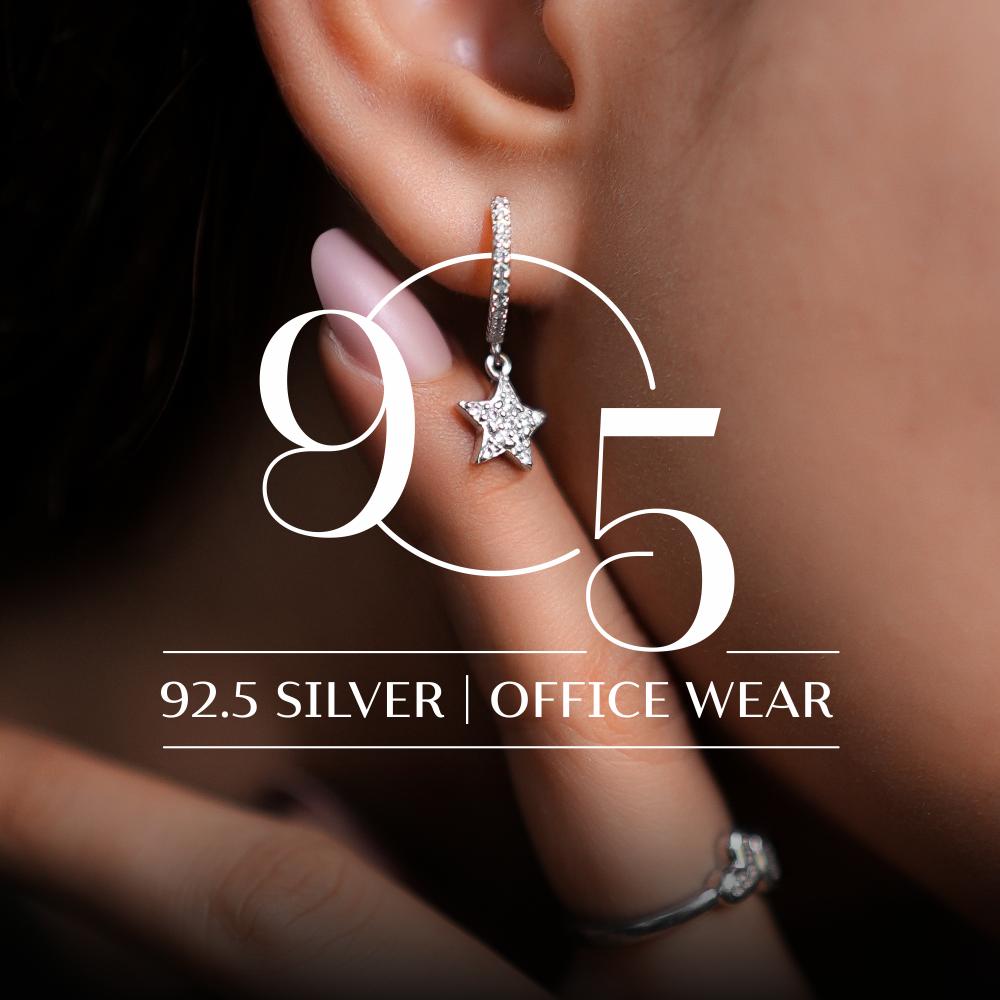
Why Silver Payal Is a Timeless Accessory in Indian Culture
In Indian jewellery traditions, few ornaments are as deeply symbolic and emotionally evocative as the payal, or anklet. Worn around the ankles, often adorned with delicate ghungroos (bells), payals are not merely accessories—they are an expression of femininity, tradition, and cultural continuity. And when crafted in silver, they embody purity, grace, and timeless charm.
From temple sculptures to Bollywood films, from grandmother’s trousseau to contemporary wardrobes, the silver payal has danced its way across centuries of Indian history. Today, collections like Silvogue’s Payal Collection preserve this legacy, offering designs that resonate with both heritage and modern style.
Ancient Origins: Payal in Mythology and History
The payal is as old as Indian civilization itself. Archaeological findings from the Indus Valley (circa 2500 BCE) include anklets, suggesting that this ornament has adorned Indian women for millennia.
In Hindu mythology, payals appear in stories of gods and goddesses. Lord Krishna is often described as listening to the soft jingling of Radha’s anklets. In temples, sculptures of celestial dancers (apsaras) depict them wearing ornate anklets, symbolising beauty and rhythm.
Silver became the metal of choice for payals early on. Unlike gold, which was reserved for the upper body and head ornaments, silver was associated with the feet and earth—considered grounding and auspicious.
Cultural Symbolism of Silver Payals
Payals carry layers of meaning in Indian culture:
-
Marriage and Womanhood: Traditionally, payals are part of a bride’s trousseau. They signal her new role as a married woman and her connection to tradition.
-
Rhythm and Sound: The soft jingling of ghungroos announces presence without words. In dance forms like Bharatanatyam or Kathak, anklets are essential instruments of rhythm.
-
Blessings of the Earth: Silver, being connected with the lunar energy in Vedic thought, symbolises calmness and purity. Worn on the feet, it is believed to ground the body and absorb negative energy.
-
Adornment Across Ages: From toddlers gifted tiny payals at naming ceremonies to grandmothers preserving heirloom anklets, silver payals span the lifecycle of Indian women.
Silver Payals Through the Ages
In Royal Courts
Mughal and Rajput courts saw payals adorned with intricate nakshi work, pearls, and gemstones. They were more than accessories—they were status symbols, part of elaborate sets of jewellery gifted to queens and princesses.
In Village Traditions
In rural India, silver payals are still widely worn. They are robust, ornate, and often heavy, serving as both adornment and investment. They also carry protective symbolism, believed to ward off evil eyes.
In Modern Times
Contemporary payals are lighter, more delicate, and versatile. They pair just as well with sarees and lehengas as with fusion or casual wear. Collections like Silvogue’s showcase this evolution, offering pieces that are timeless yet suited to today’s lifestyles.
The Science of Silver & Anklet Traditions
Beyond symbolism, silver payals have been valued for health reasons. Ayurveda suggests that silver worn near the feet helps regulate body temperature, improve circulation, and channel positive energy.
The gentle pressure of anklets around the ankle is also believed to stimulate nerves, supporting reproductive health in women. While these beliefs vary regionally, they explain why payals are considered more than mere ornamentation.
Iconic Representations in Popular Culture
The silver payal has left its mark on Indian art and cinema:
-
In the classic film Mughal-e-Azam, the sound of Anarkali’s anklets is woven into her story of forbidden love.
-
Countless folk songs celebrate the payal ki jhankar (tinkle of anklets) as symbols of grace and longing.
-
Bollywood brides, from Rekha in Umrao Jaan to Deepika Padukone in Padmaavat, are shown wearing silver payals, reinforcing their cultural importance.
These portrayals remind us that the payal is not just jewellery—it is a character in its own right, adding rhythm and poetry to life.
Silvogue’s Payal Collection: Tradition Reimagined
While the essence of silver payals remains unchanged, their designs have evolved for the modern woman. Silvogue’s Payal Collection is a perfect example—offering finely crafted pieces that carry heritage with a contemporary touch.
Two highlights include:
-
Raktamālā (रक्तमाला) Payal – Priced at ₹3,948, this design reflects the richness of traditional anklets with a refined, elegant silhouette. It captures the energy of classic payals while being light enough for daily wear.
-
Tāmrakānti (ताम्रकान्ति) Payal – At ₹3,969, this piece embodies grace and charm, perfect for festive occasions or as part of a modern bridal trousseau. Its detailing celebrates artisanal skill while remaining versatile for today’s fashion.
These designs demonstrate how silver payals can remain deeply rooted in tradition while fitting seamlessly into modern wardrobes.
When and How to Wear Silver Payals
The beauty of payals lies in their versatility:
-
Festivals & Weddings: Traditional outfits glow brighter with the shimmer and sound of silver anklets.
-
Daily Wear: Lightweight designs add subtle elegance to kurtis, sarees, or even Western dresses.
-
Dance Performances: Payals with ghungroos remain integral to classical dance traditions.
-
Gifting: Payals are meaningful gifts for brides, newborns, or milestone birthdays.
Pairing them with other silver jewellery—rings, bangles, or pendants—creates a cohesive look, while standalone anklets can make a minimalist statement.
Why Silver Payals Remain Timeless
-
Cultural Depth: Rooted in millennia of Indian traditions, silver payals embody history and identity.
-
Affordability: Compared to gold anklets, silver remains accessible while still prestigious.
-
Heirloom Value: With care, silver payals can be passed down generations, becoming part of family stories.
-
Modern Versatility: Today’s designs work across outfits and occasions, blending heritage with fashion.
Caring for Silver Payals
Like all silver, payals require care to maintain their shine:
-
Store them in anti-tarnish pouches.
-
Wipe after use to remove sweat or moisture.
-
Use mild soap solutions for occasional cleaning.
-
Avoid exposure to harsh chemicals or perfumes.
With these simple practices, payals remain radiant for decades.
Conclusion
The silver payal is not just an accessory—it is a timeless symbol of rhythm, tradition, and identity in Indian culture. From mythology to cinema, from villages to cosmopolitan cities, its jingling presence has endured.
Collections like Silvogue’s Payal Collection ensure that this legacy continues, offering pieces like the Raktamālā Payal and the Tāmrakānti Payal that merge heritage with modern aesthetics.
In every step, every celebration, and every sound of its delicate bells, the silver payal tells a story—of grace, tradition, and timeless beauty.




